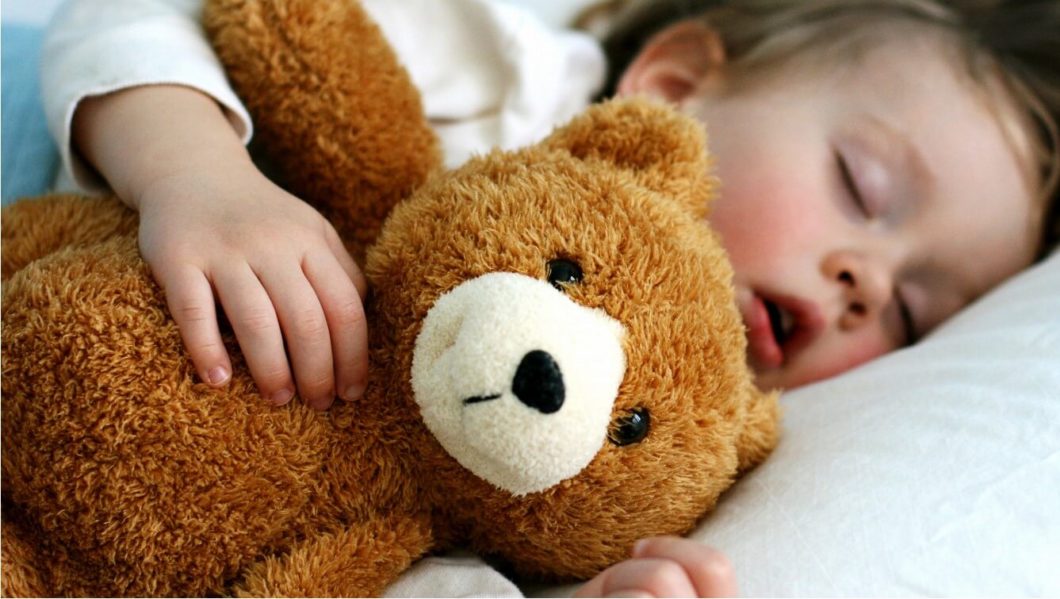Healthy sleep requires a healthy airway. There are no two ways about it: if your child can’t breathe well, their sleep will suffer.
Sleep-disordered breathing (SDB), which covers a multitude of airway-related problems, is one of the ‘Big Five’ sleep disorders in children.
But what causes SDB?
In this post, we look at the web of potential issues underlying the increase in SDB among children. These include evolutionary changes, genetic predisposition, a range of primary medical conditions and, of course, lifestyle factors.
Yes, it’s complicated – which is why treating SBD requires a holistic, team-based approach. Educating ourselves about the causes of SBD puts us in the best position to identify what’s really going on for our sleep-deprived child. And that puts us in the best position to start fixing it!
Evolution and our airways
One of the reasons why our kids might struggle to sleep relates to evolution: how the shape and size of the human mouth, jaw and airways have changed over time.
Anthropologists inform us that our earliest ancestors had thirty-two teeth and used click languages – sounds made with whole tongue pressure and suction against the roof of the mouth. A surviving example can be found in the Kalahari Bushmen.
Kalahari Bushmen babies were exclusively breastfed on demand to six months, followed by baby-led weaning to three years. Their babies were taught to chew, chew and chew some more on tough foods. All this muscle work with a highly mobile tongue is thought to be a key factor in facial – and airway – development.
Based on observation of the Kalahari Bushmen, we have learnt that our ancestors never ever had a malocclusion. Malocclusion, which literally means ‘bad bite’, is a problem in the way the upper and lower teeth fit together in biting or chewing. In fact they had beautiful wide upper jaw arches.
Our ancestors never had to go to the orthodontist or dentist to get their teeth and jaws fixed and they had a full set of 32 teeth. Admittedly, they didn’t have orthodontists and dentists back then, but nor did they need them! So what has changed?
This pattern changed significantly in the mid-1800s. Industrialisation and changes to agriculture introduced a softer diet with processed wheat and sugar, alongside bottle-feeding for babies to allow mothers to work.
This is when anthropologists noticed big changes in the way our jaws developed. They started seeing smaller, narrower jaws, malocclusion and voila! Sleep disorders relating to the airway were born.
Facial bone size and muscle tone in the mouth, face and throat are fundamental to airway health.
While we do not need to gnash our teeth to ingest food as much as our forefathers did, we certainly still need good jaw structure and well-aligned jaws and teeth for healthy airway development. We also need great chewing and swallowing to help support development and growth of healthy teeth, jaws and airway.
The changes have happened in such a short period of time, evolution alone with genetic adaptions cannot explain the speed of these changes in our jaws and teeth. ON the contrary it looks like our genetics are being modified by epi-genetic influences and these are directly related to things under our control:
It’s in the genes
While evolution makes modern humans in general more susceptible to sleep disorders, genetics can help explain why individuals suffer. If parents have a sleep disorder, it is more likely that the children will develop the same one.
But just because a sleep disorder runs in your family, that doesn’t mean that your kids (or even you) are destined to suffer.
In the past it was believed that genetics were immutable, unchangeable– you were stuck with the genes you were born into, genes that had developed by adaption to changing conditions over thousands and millions of years.
However, the more recent field of epigenetics has uncovered some fascinating evidence showing that parts of our gene structure can be modified according to four interdependent lifestyle factors: what we eat, how we move, how we deal with stress and how we sleep. However, good sleep is required for the first 3 to work their magic.
If the unchangeable part of your genetic structure predisposes you to certain medical conditions or growth patterns, then you are stuck with them.
But the current incidence of many sleep disorders cannot be explained by normal genetic processes and modifications over time, as the changes have taken place far too quickly.
This means many (but not all) sleep disorders are more likely to be an epigenetic expression in our genes. And the good news is that we can influence the ‘changeable’ part of our gene code. Yes, while genes themselves cannot be changed, the way our body expresses those genes is changeable.
Primary medical conditions
For some children, a primary medical condition may be the direct cause of their SDB. Some of these conditions come down to evolutionary changes, genetic predisposition or lifestyle issues. And some of them come down to plain old luck of the draw!
Any health condition that leads to collapse of the airway, limited airway dimensions related to growth, airway blockage (such as tonsils), poor muscle tone, abnormal facial development or general health problems like asthma or obesity, can be problematic for sleep.
According to the University of Sydney, obstructive sleep apnoea (OSA) occurs in 1–3% of snoring children and peaks around two to four years, primarily because of enlarged tonsils and adenoids.
OSA can also be present from birth in premature infants and is common with birth deformities that affect the way the face and skull develop.
There are many specific medical conditions that will make your child more prone to a sleep disorder like SDB. Here’s are some of them:
- Cranio-facial syndromes affecting the upper airway (e.g. Crouzon & Apert’s Syndrome)
- Neuromuscular diseases (e.g. Muscular Dystrophy, Cerebral Palsy)
- Genetic disorders affecting respiratory control (e.g. Rett Syndrome)
- Connective tissue diseases (e.g. Marfans, Ehlers-Danlos)
- Metabolic storage disorders (e.g. Insulin resistance, Hurler’s Syndrome)
- Structural abnormalities (e.g. cleft palate, scoliosis)
- Down syndrome
- Prader-Willi syndrome
- Koolen-de Vries syndrome
- Leigh’s Disease
- Chiari malformation
- Chronic lung disease
- Epilepsy
Other more general medical issues also play a part in SDB. These include obesity, allergies, asthma, recurrent tonsillitis, sinus infections, otitis media (glue ear) and reflux.
Lifestyle causes
Evolution has made us more vulnerable to sleep disorders, particularly those related to upper airway, while genetic traits can also contribute. But in many cases, lifestyle is the main culprit.
The world we live in is somewhat at fault for our sleeplessness. City lights are on 24/7. People are glued to screens – computers, phones, tablets and TVs – most of which emit blue light, which causes suppression of melatonin.
Poor melatonin release doesn’t just muck with our sleep cues but also our wider health: melatonin lowers blood pressure and limits the production of hormones associated with suppression of cancers and diabetes, so when its release is hampered, the consequences are far-reaching. Studies show our immunity decreases and tumour growth increases with poor sleep.
Irregular hours, technology overload, too many naps, not enough naps, use of medications and supplements, nutritional deficiencies, dietary habits, environmental overload, being too hot, too hungry, too stressed – all these contribute to poor sleep and sleep disorders.
For example, a child’s recurring nightmares and night-time waking can even be connected to their media exposure.
And of course, the health of your child’s airway health is influenced by nutrition, exercise, stress and exposure to pollutants.
Finding the root cause = finding the right solution
We may be stuck with inherited genes, evolutionary physical changes and some primary medical conditions, but we can still influence the course of the development of our facial morphology and airway.
This means disordered sleeping can often be addressed with changes to your child’s behaviour, environment and routine.
Knowing what you can influence, including which experts can help you, puts you in a great position as your child’s lifeguard. You can have a profound effect on your child’s life by helping them achieve great sleep alongside optimal airway health as the earliest possible age.
Looking for more?
Let’s build a new generation of healthy sleepers!
With my book Sleep-Wrecked Kids, I support you to become the lifeguard of your child’s sleep. Packed full of information and practical help, it will get you on the way to good sleep for all the family. Order your copy here!



